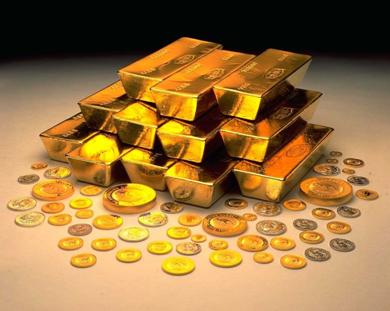Over the years I have come to the conclusion that governments don’t like markets. Markets are too unpredictable for their taste. And they don’t do what the government wants them to do. They don’t move in directions the government wants them to. In short, markets can’t be controlled. Or to put it even more simply, markets have a mind of their own.
And no government likes that.
Hence, when the diesel price was decontrolled in October earlier this year, I had my doubts about how long will it last. The finance minister Arun Jaitley had said on that occasion “Henceforth, like petrol, the price of diesel would be linked to the market and therefore depending on whatever is the cost involved …the consumers will have to pay.”
At times things sound too good to be true. This was one of those statements. And now only a few weeks later, the government has sideline the market and decided to go about setting the price of petrol and diesel.
Earlier this week on December 2, 2014, the government decided to raise the excise duty on petrol and diesel. This was the second time the government increased the duty in less than a month. The excise duty on petrol was increased by Rs 2.25 per litre and that on diesel by one rupee per litre.
This increase in duty will not be felt at the consumer level. Nonetheless, if the government had not decided to increase the duty it would have meant that consumers would have benefited from a further fall in the price of petrol and diesel. Hence, the government is essentially creaming off the consumer surplus.
This also explains why the price of petrol and diesel in India hasn’t fallen as much as the global oil prices have. And that means the petrol and diesel prices are no longer linked to the market, as Jaitley would have had us believe only a few weeks back. As an editorial in the Business Standard points out: “If the government is forcing the oil marketing companies to set prices according to the dictates of political masters, then it can hardly claim deregulation has happened.”
The government is having a tough time meeting its expenditure and this is a very easy way to raise its income. The fiscal deficit for the first seven months of this financial year (April to October 2014) was at 89.6% of the annual target. Last year during the same period, the number was at 84.4%. Fiscal deficit is the difference between what a government earns and what it spends.
Hence, if the government has to meet its fiscal deficit target it has to increase its income or decrease its expenditure or possibly do both.
An editorial in The Indian Express points out that the two hikes in excise duty, will help the government earn an additional Rs 10,000 crore. This should come as a welcome relief for the government given that estimates now suggest that indirect tax collections will see a shortfall of around Rs 90,000 crore in comparison to what had been assumed at the time the budget was presented in July this year.
The editorial goes on to suggest that instead of increasing the excise duty the government could have levied a cess and collected that money to go towards a specific purpose like a national highway fund. But that hasn’t happened and the increase in the excise duty will just disappear into the consolidated fund of India.
But that’s just one part of the story. Every government has the right to increase or decrease taxes, after taking into account the situation that it is operating in. Nevertheless, if the government had allowed the market to operate, the oil marketing companies would have been allowed to pass on this increase in excise duty to the end consumer. The fact that they haven’t been allowed to do so means that the government is deciding on the price of petrol and diesel.
Further, now that the government has decided to set the price of petrol and diesel, it will be interesting to see what happens when the price of oil starts to go up again (That may not happen immediately with Saudi Arabia looking determined to drive down the price of oil to make US shale oil unviable, but its a possibility nonetheless).
The previous Congress led United Progressive Alliance(UPA) government did not allow the oil marketing companies to sell petrol and diesel at a price which was viable for them.
Instead, the government along with the upstream oil companies like ONGC and Oil India Ltd, compensated the oil marketing companies for their “under-recoveries”. This drove a huge hole into the government finances. The total oil subsidy bill during the period the Congress led UPA government ruled the country was a whopping Rs 8,30,000 crore. This along with other subsidies pushed up the government expenditure and in the process its fiscal deficit.
Once the government was borrowing more, it crowded out other borrowers as there was a lesser amount of money available for others to borrow. This pushed up interest rates. It also led to a rupee crisis between late May and August 2013, when the value of the rupee crashed against the dollar.
It had other repercussions as well. But before we get into that it’s important to repeat what Henry Hazlitt writes in Economics in One Lesson: “We cannot hold the price of any commodity below its market level without in time bringing about…consequences. The first is to increase the demand for that commodity. Because the commodity is cheaper, people are tempted to buy, and can afford to buy, more of it.”
This is precisely what happened in India. The demand for diesel went up because for a very long period of time the government completely delinked diesel prices to international oil prices. Hence, there was a substantial difference between the price of petrol and diesel. This led to a huge market in diesel cars. Given this, rich consumers ended up consuming more than their fair share of diesel.
As Hazlitt writes in this context: “Unless a subsidized commodity is completely rationed, it is those with the most purchasing power than can buy most of it. This means that they are being subsidized more than those with less purchasing power…What is forgotten is that subsidies are paid for by someone, and that no method has been discovered by which the community gets something for nothing.” So, while the rich went around in their diesel cars, the nation ended up with a huge subsidy bill.
Like the Congress led UPA before it, the current BJP led National Democratic Alliance (NDA) has decided to set the price of petrol and diesel and not leave it up to the market. There will be great pressure on the government to hold back the price of petrol and diesel, once oil prices start to go up again. And that as we have seen can be disastrous for the economy.
The article was published on www.equitymaster.com on Dec 5, 2014




